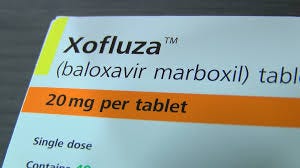Flu Season Alert: A Closer Look at Flu Meds Like Tamiflu and Xofluza
Medications I have almost never prescribed
As flu season approaches, many people consider whether to use antiviral medications such as Tamiflu (oseltamivir) and Xofluza (baloxavir marboxil) to manage symptoms. While these drugs are commonly prescribed, understanding their efficacy and potential drawbacks is essential for making informed health decisions.
Efficacy of Tamiflu and Xofluza Research on these medications shows varying results:
Tamiflu: According to a systematic review published by the Cochrane Database of Systematic Reviews, Tamiflu can shorten the duration of flu symptoms by around 16 to 24 hours if taken within the first 48 hours of symptom onset. However, the review also noted that Tamiflu did not significantly reduce hospitalizations compared to placebo. There are also concerns about its side effects, such as nausea, vomiting, and in rare cases, neuropsychiatric events like hallucinations and self-harm in young adults.
Xofluza: A study published in the New England Journal of Medicine found that Xofluza reduced the duration of flu symptoms by about 26 hours on average, similar to Tamiflu, but with a single dose compared to Tamiflu's twice-daily regimen for five days. Xofluza has been noted for its novel mechanism of action, which involves inhibiting the cap-dependent endonuclease protein of the influenza virus, potentially reducing the development of resistance.
Side Effects vs. Benefits The benefits of reducing flu symptoms by just a day must be carefully weighed against these medications' side effects. For instance, while nausea and vomiting can be managed, the potential for severe neuropsychiatric symptoms raises significant concerns, especially in pediatric and young adult populations.
Clinical Implications The marginal benefit these drugs offer in terms of reducing the duration of symptoms poses a significant question: Is it worth the risk? Of most importance is the note that any benefit was only seen if taken within the first 48 hours. Generally you would not know that you have Influenza within 48 hours. You would often not even have symptoms or have very mild symptoms for at least 24 hours. The rare scenario where you may know this is if a family member tested for flu and they were positive, and now you start to have symptoms. For most individuals, especially those who are otherwise healthy, the answer may lean towards no, given the effective alternatives that involve less risk:
Rest and Hydration: These are crucial for recovery from the flu and are side-effect-free.
Over-the-Counter Remedies: Medications like fever reducers can manage fever and pain without the risks associated with Tamiflu or Xofluza.
Preventive Measures Focusing on prevention can also diminish the need for these antivirals:
Immune Support: Healthy eating, sufficient sleep, managing stress, supplements and herbs.
Hygiene Practices: Regular handwashing and avoiding close contact with sick individuals can prevent the spread of the flu.
Conclusion In conclusion, while Tamiflu and Xofluza can slightly reduce the duration of flu symptoms, their effectiveness does not substantially outweigh the potential risks for most people. A holistic approach that includes preventive measures and symptomatic treatment remains the cornerstone of managing flu season effectively.
For those interested in a deeper dive into practical and safe approaches to seasonal illnesses, consider pre-ordering my upcoming book. It's filled with insights and strategies to keep you and your family healthy during flu season and beyond.




What are your thoughts on the flu shot?